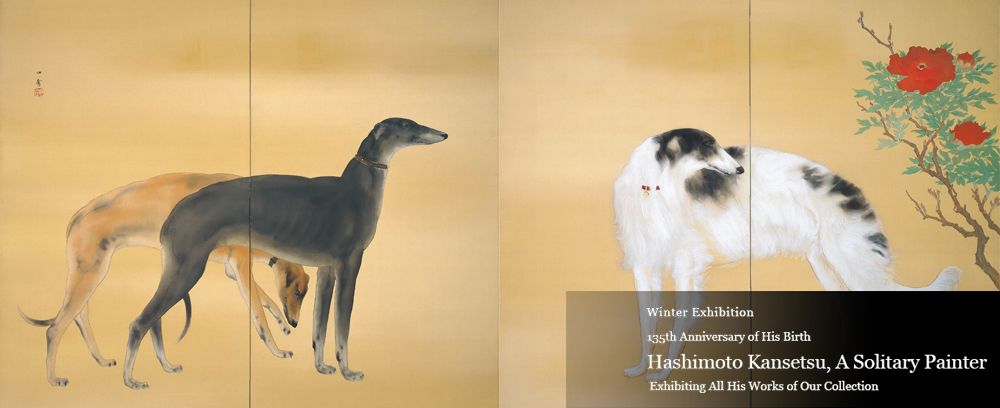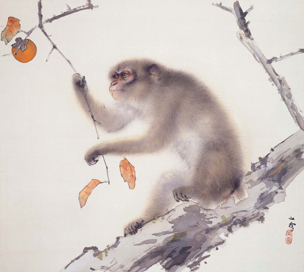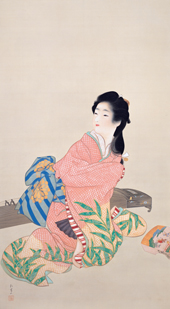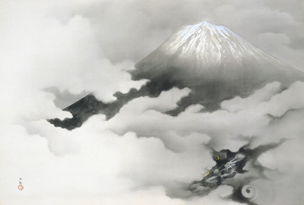
Dogs from Europe | Hashimoto Kansetsu
Winter Exhibition, 2018 CLOSED
Exhibiting All His Works of Our Collection
135th Anniversary of His Birth Hashimoto Kansetsu, A Solitary Painter
December 1 (Sat), 2018 ‐ February 28 (Thu), 2019
Hashimoto Kansetsu (1883-1945) was born in what is now Kobe City, and from his childhood became familiar with Kangaku, the study of Chinese classics, influenced by his father, who was a Confucian scholar. Meanwhile, he learned the painting style of the Shijo school, a traditional school of Japanese painting, and went to Kyoto to be a disciple of Takeuchi Seiho. However, he later left Seiho, and began painting alone, distinguishing himself from other painters. He subsequently won many awards at the govermental exhibition, and finally became a great painter representative of the art world.
While basing his painting style on the Shijo school, he painted numerous works with the idea from Chinese classics, visiting China many times throughout his life. He also went to Europe with his interest in Western painting, and his earnest study of all ages and cultures promoted the development of his own painting style. After the Showa Era, he began painting numerous animal paintings with his keen observation and delicate brush strokes. Those works would draw the viewer’s attention.
This exhibition, celebrating the 135th anniversary of his birth, will exhibit all of his works that the museum houses. We hope you will enjoy Kansetsu works, which were created through his great skill and thorough education.
While basing his painting style on the Shijo school, he painted numerous works with the idea from Chinese classics, visiting China many times throughout his life. He also went to Europe with his interest in Western painting, and his earnest study of all ages and cultures promoted the development of his own painting style. After the Showa Era, he began painting numerous animal paintings with his keen observation and delicate brush strokes. Those works would draw the viewer’s attention.
This exhibition, celebrating the 135th anniversary of his birth, will exhibit all of his works that the museum houses. We hope you will enjoy Kansetsu works, which were created through his great skill and thorough education.

Hashimoto Kansetsu"Monkey"
(1940)
(1940)
--Meaning of Depicted Items--
Interpreting Japanese Painting
When viewing portraits, including bijin-ga (beautiful woman paintings), you may sometimes find subjects holding items, such as combs, flowers or books. What is the significance of these items? This exhibition will help the viewer interpret several Japanese paintings, focusing on the various items depicted in the portraits.

Uemura Syoen "Daughter Miyuki"
(1914)
(1914)
150th Anniversary of His Birth
The Art of Yokoyama Taikan IV
Following the past three exhibitions in the series, the final Taikan-featured exhibition will display several his works, including Shishigatani (East of Kyoto), a brilliant colored painting, Sunrise on the Sea depicting the morning sun in an emphatic way, Dismally Cold Wind, a tasteful suiboku-ga (sumi ink paintings) in his later years. We hope that you will appreciate these masterworks by Taikan, who poured his passion into the creation of the new Japanese painting style.

Yokoyama Taikan
"Dragon and Mt. Fuji"
(1940)
"Dragon and Mt. Fuji"
(1940)

